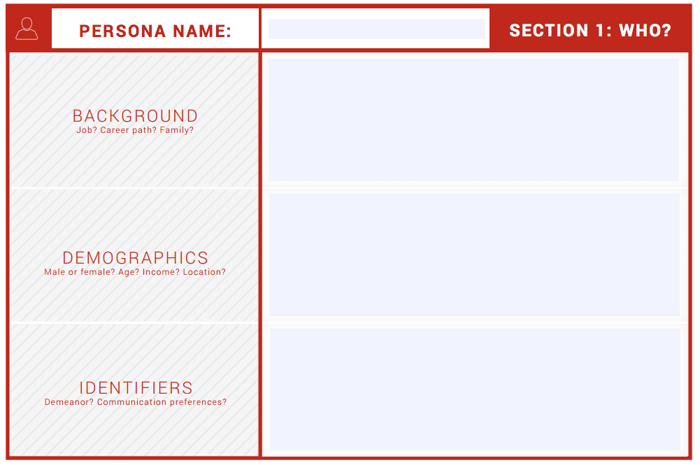The key here is understanding who Manager Mary or Owner Ollie are, what their goals or frustrations are, and how you as a business can help them solve their problems. Creating in-depth buyer personas of these ideal or target customers will help you to relate to them as real-life humans, and will help you to develop your sales and marketing strategies around these ideal people who you want to attract.
We’ve already discussed the basics of researching who your potential and current customers are in last week’s post, so now what do you do with all of that raw information? How do you present it so that its easily understandable by everyone on your team?
Data Segmentation
Take a look at the data you’ve collected throughout your research process: can you see any trends, patterns and common characteristics amongst the info? This is where data segmentation comes into play. For example: look at the roles of the customers who convert through search; are they different from the roles or job titles of those customers who convert through social media? Or through Google Adwords? Or take a look at the visitors to specific product or services pages on your site: a sales leader may spend more time viewing services that will help increase his sales’ teams leads, whereas a finance manager may be more interested in reporting or downloading white papers detailing ROI.

Persona Creation
The next step of this whole process is to actually build out your buyer personas! Depending on the type of business you have, and the number of products or services you offer, you should have between 3 – 5 personas. You’ll need to create an individual profile for each persona that you create, which should include all of the relevant data points you came across during your research. For example, your profile for “IT Ian” should reference the following data points:
Background:
- Detail the personas job role and responsibilities
- Include pertinent information about the persona’s company
Education, experience, hobbies, etc.
- Married? Children?
Demographics:
- Gender
- Age Range
- Joint household income
- Geographic (Is your persona urban, suburban, or rural?)
Identifiers:
- Key personality traits (extroverted? Reserved?)
- Mannerisms
- Job identifiers (Works 60 hours/week, prefers email over direct mail, etc.)
Goals:
- Primary Goal
- Secondary Goal
Challenges:
- Biggest challenge to persona’s success
- Needs in order to achieve success
Value Proposition:
- How your company solves your persona’s challenges
- How your company is positioned to achieve persona’s goals
Quotes:
- Include actual quotes from buyer persona interviews. These help to further represent your persona accurately as well as help your team understand them better.
Common Objectives:
- What are the most common objections to your product/service from this persona?
Marketing Message:
- How will you convey the value and position your solution to this specific persona?
Elevator Pitch:
- This should be a simple description of your solution that everyone in your company understands.
Image:
- The image should be a picture of someone that represents your persona. You can pull an image from online somewhere and use it.
HubSpot has also created a very useful tool “The Awesome Buyer Persona Word Doc Generator“, which will ask you a series of questions and email you a consolidated word doc summary for you to review and edit later.
Next Steps
Once you’ve designed and finalized 3 – 5 profiles detailing your ideal customers, you need to put them to work! This whole process should have helped you to understand exactly who your target audiences are, and what each audience is interested in, in terms of keyword searches, topics, and forms of content and communication; so now you can take this information and develop target keywords, content topics and social engagement specifically directed towards each buyer persona. Targeted communication will help to create a better experience for your customers and prospective customers, increasing satisfaction, increasing content sharing, increasing referrals and increasing sales!
And there you have it! Your quick and easy wizard to creating and using buyer personas in your sales and marketing strategy.
We’re very excited to announce that Lindsay Thibeault from HubSpot will be publishing a guest post on the Umami blog in the coming week, which will be focused on the topic of email marketing to your buyer personas. Make sure you come back and check it out!
In the meantime, for more information on creating personas or to download our buyer persona template, download our free guide.



